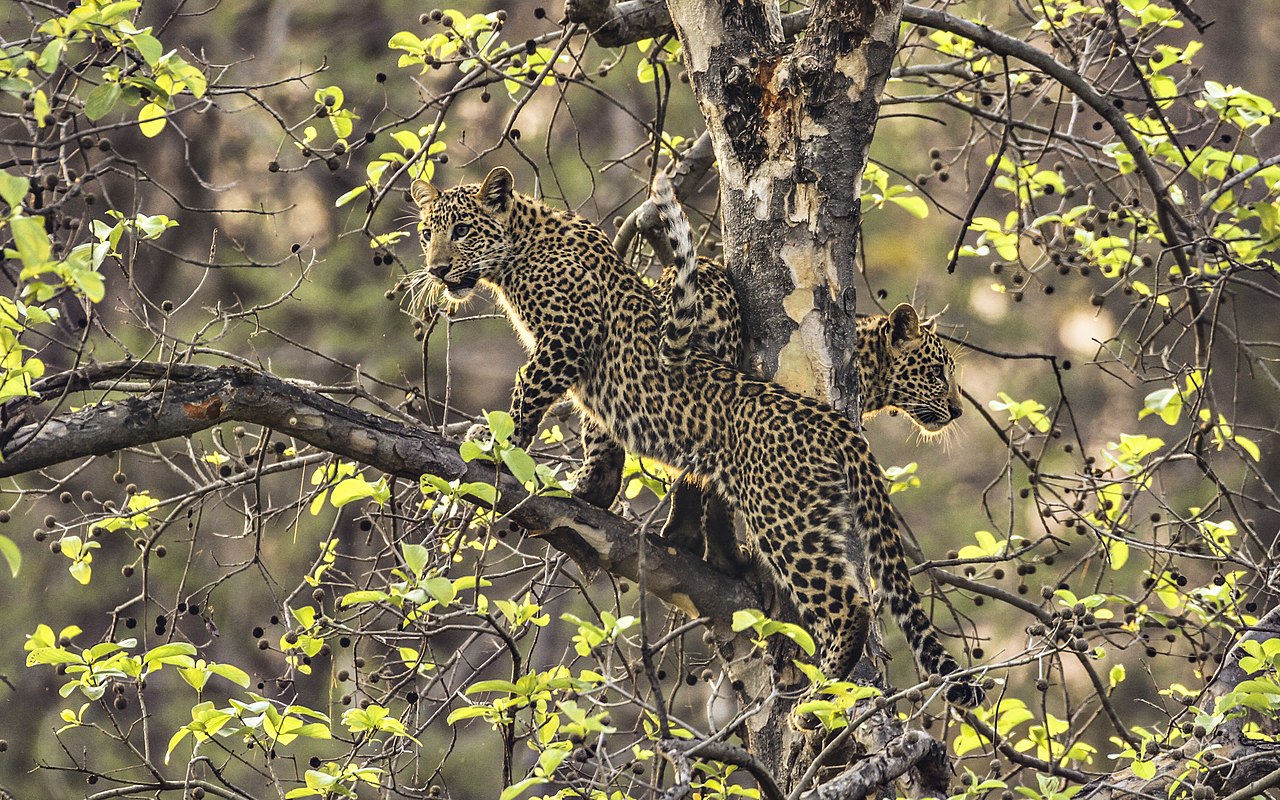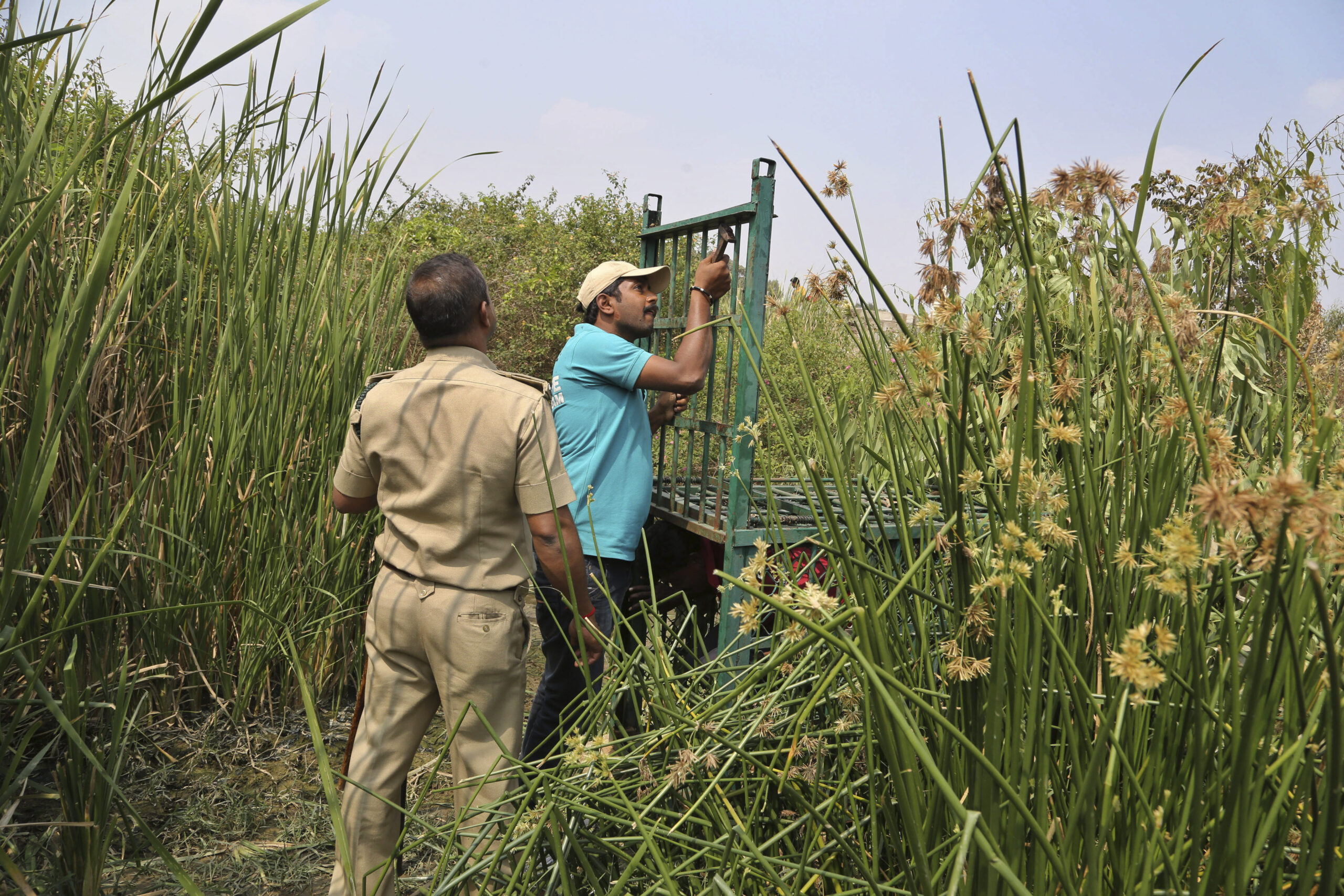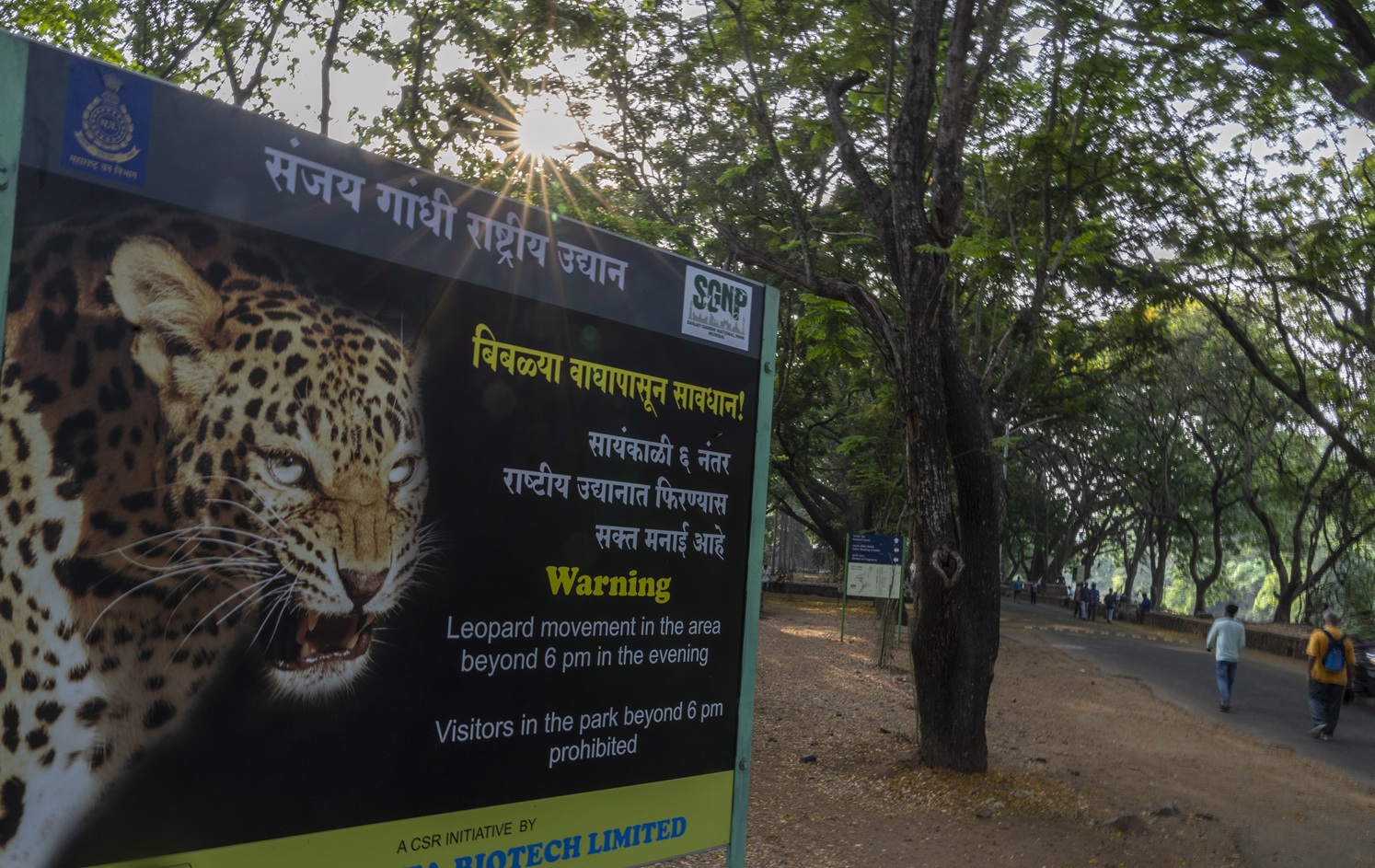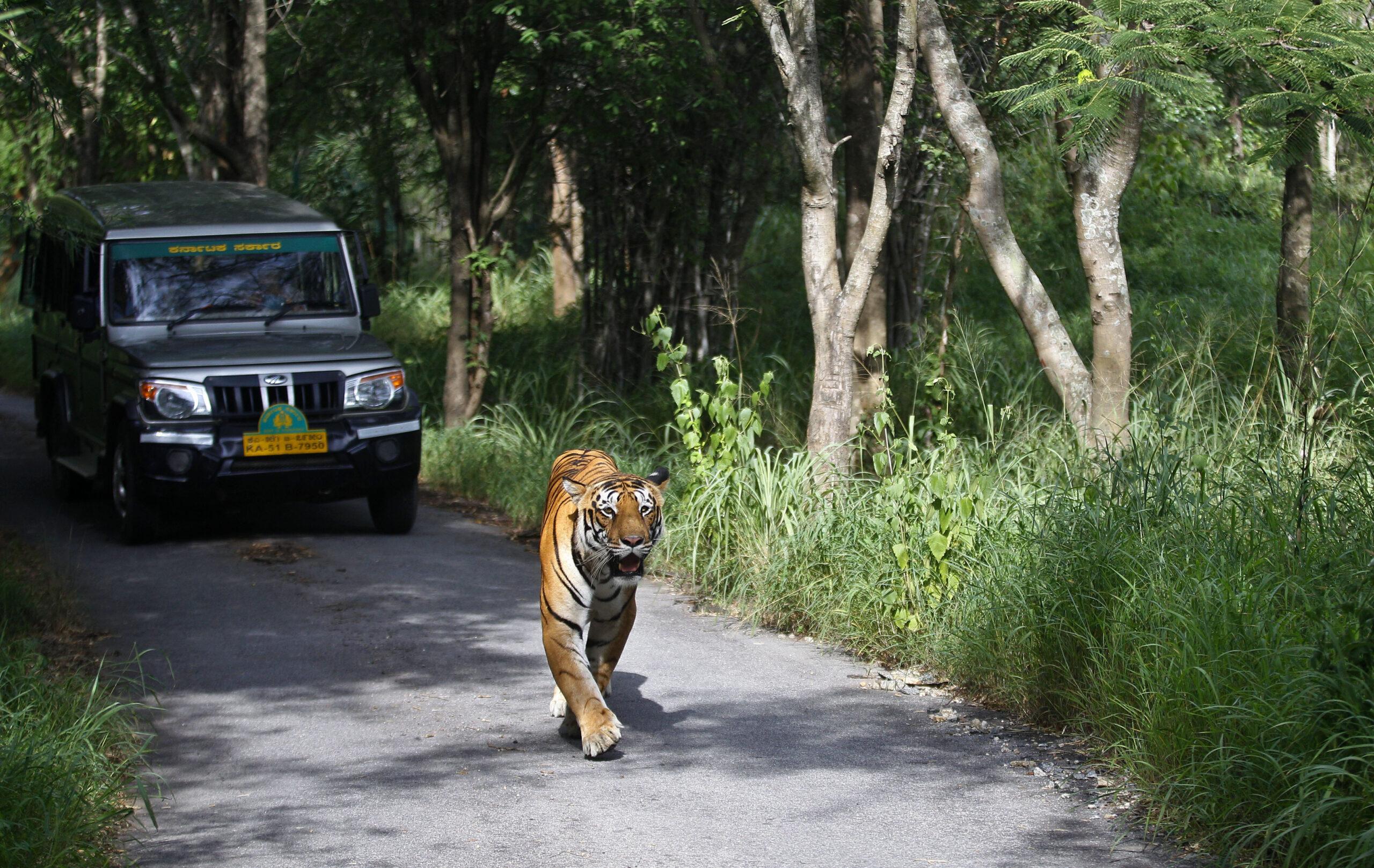- Bannerghatta National Park (BNP) sits on the edge of Bengaluru, one of India’s largest cities, putting humans and wildlife — such as leopards — in close proximity.
- A recent study estimates 80-85 leopards live in and around BNP, surpassing the leopard count around Mumbai, previously named as the city with the most leopards.
- The study recommends community outreach to increase awareness and acceptance of leopards as well as protecting key habitats in the area.
- Local residents who are accustomed to living among leopards share their stories of leopard interactions, noting their presence as “normal” and not “scary.”
Suresh Raj, a 73-year-old gunsmith who lives inside a national park on the edge of the South Indian metropolis Bengaluru, has lost three dogs since last October, killed by free-moving leopards in the region.
“It’s very normal for leopards to take our dogs — not something I’d resent, living in the forest,” says Suresh, who currently owns four dogs. Suresh has been living here for the last 40 years, within Bannerghatta National Park (BNP). Pitted with wild animals, the forest, which sits against the edges of one of India’s largest cities, once sheltered hundreds of people in scattered hamlets, until they were relocated when the land was acquired for the park. Dotted with shrinking scrub forests, rocky outcrops and gated communities, Bengaluru’s leopards (Panthera pardus) coexist with four endangered species: tigers (P. tigris), dholes (Cuon alpinus), elephants (Elephas maximus) and pangolins (Manis crassicaudata), alongside several small and large prey species and mammals.
In a rapidly urbanizing India, wildlife species face the many risks of surviving in human-dominated landscapes. Yet leopards, among the most elusive apex predators, continue to persist across fragmented and peri-urban areas, despite being categorized as vulnerable under the IUCN Red list. A recent study by the Holématthi Nature Foundation and Nature Conservation Foundation found that Bengaluru, a city of more than 14 million people, is home to 80-85 leopards. This surpasses Mumbai, previously considered to have the highest density of leopards in the world.

In India, leopards are given legal protection by being included in Schedule I (Part A) of the Wild Life (Protection) Act, 1972 attaining the highest level of protection in the country.
People living closer to leopard habitats are often cautious about going out from dusk till dawn, when leopard movement is considered to be relatively high. However, leopard sightings are not uncommon in human settlements close to leopard habitats.
It was in 1984 that Suresh saw a leopard for the first time near his house. “I was on my way back in my scooter. It had just drizzled that evening. I saw something lying and rolling on the road near my gate. And when I got closer, just one jump and it vanished into a nearby bush. The patterns on it looked like that of a leopard’s,” he recalls.
According to him, dogs are easy prey for leopards. “I can hear chitals [Axis axis] sometimes, but not very often. I think the leopards come for dogs when there’s less game in the jungle,” he says.
A resident of Sobha Forest View, a premier residential society known for its proximity to Turahalli Forest, a dry deciduous Reserved Forest, about 20 kilometers (12 miles) from BNP, tells Mongabay about leopard activity in the area.

“I don’t even like it when they sight leopards and circulate pictures of it on social media. It creates unnecessary fear among people,” the resident says, asking not to be named because her neighbors don’t agree with her views on leopards. She adds, “It’s not that bad or scary. They’re on their own. Leopards come and go; they don’t do anything to us unless we provoke them. Of course, it’s important to be careful and protect our pets.”
While leopards are well adapted to thrive in diverse landscapes, their preference for domestic animals, including livestock and dogs, in addition to natural prey makes them highly prone to conflict with humans.
Of the 80-85 leopards documented in the Bengaluru area, 54 were found inside BNP while the remaining 30 are estimated to be roaming around private and government lands in the city’s peripheries.
“Though leopards are tolerant of anthropogenic pressures, they do suffer from human pressures after a threshold level of human population. They are elusive — they don’t live amidst high-rise buildings or fully human-dominated areas,” says conservationist Sanjay Gubbi, the lead author of the study and author of the book Leopard Diaries: The Rosette in India. “They live on the edge of cities like Mumbai and Bengaluru, not within the city. They are very shy and keep away from people,” he says.
The estimated population of leopards in India is 13,874, but that count is likely incomplete and the actual population could be much higher.

To monitor long-term variation in abundance and density of leopards and to provide inputs to the government about issues in leopard conservation, Gubbi says researchers installed 500 camera traps in 250 locations. These included the BNP area and nearby mixed habitat in Turahalli, BM Kaval, UM Kaval, Roerich Estate, Sulikere and Hesaraghatta and adjoining lands near BNP between February and March 2019, July and September 2020 and February and April 2023. The camera trap data were analyzed using the spatially explicit capture-recapture statistical methodology to estimate absolute abundance and density.
The study, which the authors say provides the first reliable estimates of leopard abundance and density in BNP, indicates an increase from 40 to 53 individual animals between 2019 and 2023, attributing the rise to a higher relative abundance of wild prey and low tiger presence in the region. The study shows greater leopard density in BNP than in other Indian protected areas, at roughly 10.2 per 100 km2 (38.6 mi2).
Gubbi says that despite a higher density of leopards in BNP, they face threats from loss of habitat due to urbanization and loss of natural prey. Underscoring the importance of communities living on the fringes of urban forests to be more accepting of leopard presence in their backyards, Gubbi says in an email, “Resident welfare associations (RWAs) should be willing to work with experts.” According to him, longtime residents of Bengaluru show higher tolerance to leopard movements on the outskirts, as they are familiar with the city’s expansion into territories that were previously uninhabited by human settlements.
Another similar study documenting leopards in Central India published in November 2024 found that leopards demonstrated an impressive ability to coexist with humans. The study estimated a population of 23 leopards in Indore and 17.6 leopards in Jabalpur, a significant number given the high density of human settlements in both cities, with populations of more than 3 million and 1.5 million, respectively.
It found that key environmental factors shaping leopard habitat selection in Indore were land use, precipitation, daily temperature fluctuations and human activity, whereas in Jabalpur, seasonal rainfall, elevation and temperature extremes were considered.

However, both studies reiterated similar concerns in leopard conservation: careful management of human activities near wildlife habitats and ensuring ecological connectivity to preserve natural habitats.
Among key recommendations suggested by Gubbi’s study are intensifying community outreach to enhance awareness and acceptance of leopard movements. “I think Bannerghatta National Park has reached its carrying capacity for leopards,” Gubbi says, adding that protection of key habitats beyond BNP is critical. The study recommends that patches of reserved forests (governed under the Indian Forest Act and used for timber production and resource extraction) in the nearby areas of BM Kaval, UM Kaval, Roerich Estate, TK Falls and Gollahalli Gudda be converted into a conservation reserve (governed by the Wildlife Protection Act with a focus on biodiversity conservation). “Unfortunately, the proposal is pending since 2017 and nothing has changed ever since,” he says.
Speaking about Mumbai’s leopards, Gubbi says in an email, “The Sanjay Gandhi National Park (SGNP) is perhaps the sole lifeline for these big cats. Without this national park, leopards may have no viable space to survive.”
In contrast, Bengaluru’s leopards are not restricted to Bannerghatta National Park; they are also found in surrounding areas, including reserved forests, deemed forests (areas that aren’t officially classified by the government) and other natural habitats near the city. “Bengaluru’s eucalyptus plantations, too, support leopard populations,” he adds.
According to Gubbi, both regions require long-term monitoring of leopard populations, along with satellite imagery analysis to assess habitat loss.
Beyond urbanization, both areas also face threats from quarrying, high-rise construction and habitat fragmentation. “As both are major metropolitan areas, the survival of leopards at current population levels depends on prioritizing the protection of national parks (SGNP and BNP), reserved forests and other leopard habitats in and around Bengaluru,” Gubbi says in an email.
He says that while the leopards of Mumbai have received considerable media attention, those in Bengaluru have not received similar focus.

Praveen Bhargav, conservationist and Trustee of the wildlife advocacy forum Wildlife First, notes that with real estate development and massive land use changes, it would be increasingly difficult to protect the remaining bits of forests around Bengaluru.
Commenting on the feasibility of coexistence as a future conservation strategy, Bhargav says, “Any interaction with large carnivores is potentially conflict prone and more so in fragmented patches of forests hemmed in with high-density human populations. We therefore need to tread with abundant caution, as these are essentially ‘sink’ areas.”
He says that urban government forest offices do not have sufficient staff and resources to handle human-wildlife conflicts. “They also do not have the necessary capacities to interface with multiple agencies on issues like land development, waste management, stray dogs,” he adds.
However, for Suresh, overcrowding of Bannerghatta National Park over the weekends seems to be a threat to leopard movement.
“They should restrict the number of people who enter the park on Saturdays and Sundays. It would be nice if the park authorities also educate the visitors on manners before taking them into the park. More often than not, I hear them scream, dump garbage in the park premises. The park is closed on Tuesdays and, interestingly, all the pets I lost so far were on Tuesdays,” he says, as he recalls seeing a leopard grab one of his dogs on a late Tuesday evening.
Banner image: A leopard photographed in India’s Satpura National Park, in Madhya Pradesh. Image by Davidvraju via Wikimedia Commons (CC BY-SA 4.0).
Citation:
Majumder, A., Suryan, T., Rizvi, T., Tripathi, R. M., & Nag, S. (2024). Assessment of the population and suitable habitat for a Leopard (Panthera pardus) in the urban landscapes of central India. European Journal of Wildlife Research, 70(6). doi:10.1007/s10344-024-01871-7
Source link
#India #humans #leopards #meet #major #cities #preserving #habitat #crucial

Hello guys!
I came across a 143 helpful site that I think you should take a look at.
This tool is packed with a lot of useful information that you might find helpful.
It has everything you could possibly need, so be sure to give it a visit!
[url=https://www.binews.it/uncategorized/four-things-you-have-to-do-when-youre-in-the-middle-of-a-hot-streak-and-five-things-you-have-to-stop-doing-to-bet-with-substance/]https://www.binews.it/uncategorized/four-things-you-have-to-do-when-youre-in-the-middle-of-a-hot-streak-and-five-things-you-have-to-stop-doing-to-bet-with-substance/[/url]
Furthermore don’t neglect, guys, — one at all times can inside this publication find responses to address your the very complicated queries. The authors made an effort — present the complete data in the most easy-to-grasp method.
Hello lads!
I came across a 143 interesting tool that I think you should visit.
This site is packed with a lot of useful information that you might find helpful.
It has everything you could possibly need, so be sure to give it a visit!
[url=https://nextleveltricks.net/top-13-best-games-for-software-engineers/]https://nextleveltricks.net/top-13-best-games-for-software-engineers/[/url]
Furthermore remember not to forget, folks, — one constantly may in this particular publication find responses for the the very complicated questions. We attempted — lay out all of the data in the most most easy-to-grasp way.